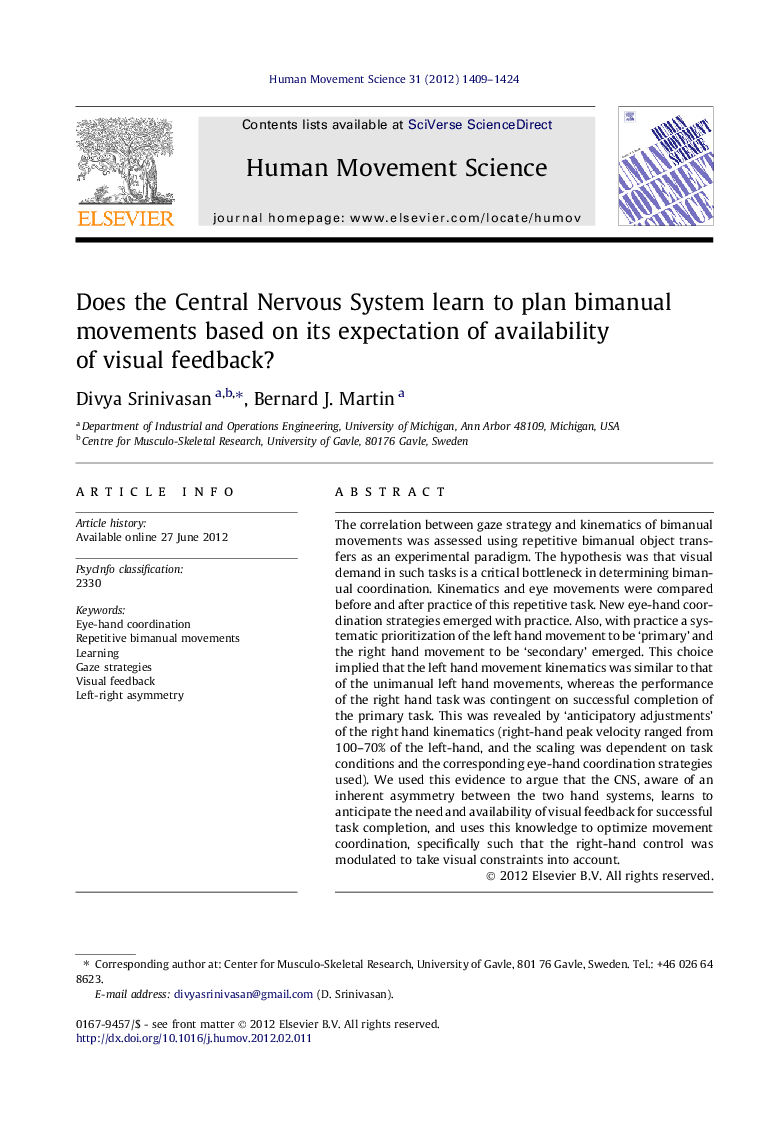| کد مقاله | کد نشریه | سال انتشار | مقاله انگلیسی | نسخه تمام متن |
|---|---|---|---|---|
| 928506 | 922371 | 2012 | 16 صفحه PDF | دانلود رایگان |

The correlation between gaze strategy and kinematics of bimanual movements was assessed using repetitive bimanual object transfers as an experimental paradigm. The hypothesis was that visual demand in such tasks is a critical bottleneck in determining bimanual coordination. Kinematics and eye movements were compared before and after practice of this repetitive task. New eye-hand coordination strategies emerged with practice. Also, with practice a systematic prioritization of the left hand movement to be ‘primary’ and the right hand movement to be ‘secondary’ emerged. This choice implied that the left hand movement kinematics was similar to that of the unimanual left hand movements, whereas the performance of the right hand task was contingent on successful completion of the primary task. This was revealed by ‘anticipatory adjustments’ of the right hand kinematics (right-hand peak velocity ranged from 100–70% of the left-hand, and the scaling was dependent on task conditions and the corresponding eye-hand coordination strategies used). We used this evidence to argue that the CNS, aware of an inherent asymmetry between the two hand systems, learns to anticipate the need and availability of visual feedback for successful task completion, and uses this knowledge to optimize movement coordination, specifically such that the right-hand control was modulated to take visual constraints into account.
► This study investigated the correlation between gaze strategy and kinematics of bimanual movements.
► The effect of learning was also studied on both hand kinematics and eye movements.
► Two new eye-hand coordination strategies emerged with learning.
► Non-dominant hand was given priority in allocation of visual resources.
► With experience, dominant hand planning was anticipatorily modulated to satisfy task’s visual constraints.
Journal: Human Movement Science - Volume 31, Issue 6, December 2012, Pages 1409–1424